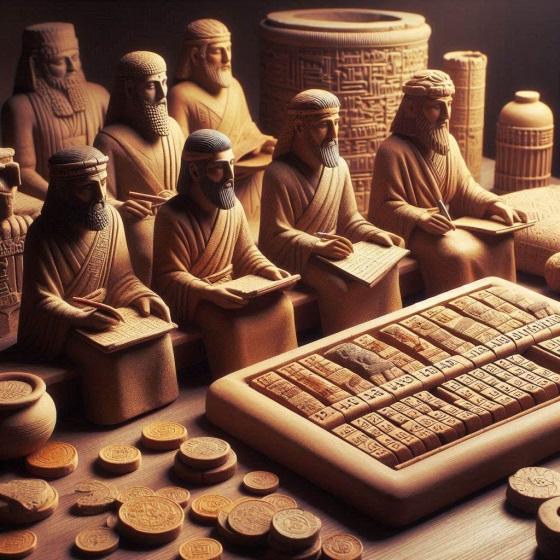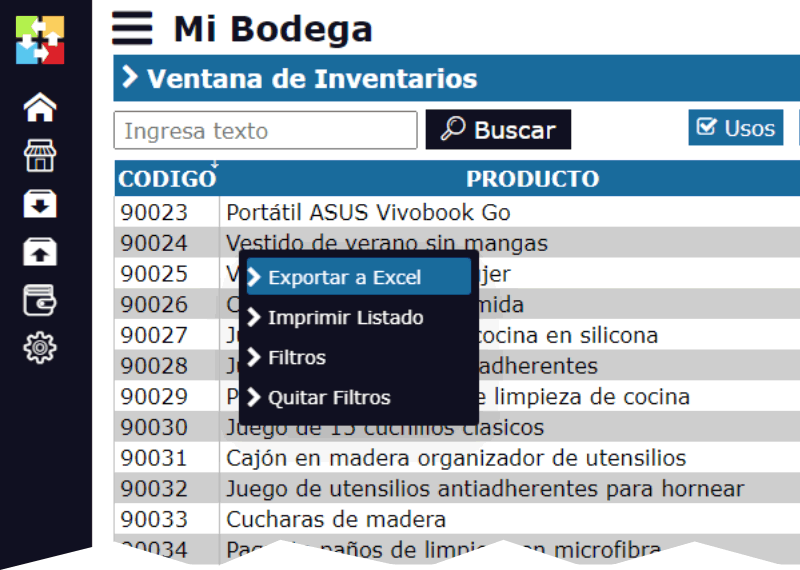Accounting in Ancient Mesopotamia: The Use of Clay Tablets
Accounting, as we know it today, is the result of thousands of years of evolution and development. From the first records on clay tablets to the account books in medieval monasteries, accounting has been a vital tool for resource management and economic administration. This article explores how the first accounting records originated and evolved in ancient Mesopotamia, Egypt, the Roman Empire, and the Middle Ages.

Accounting in Ancient Mesopotamia: The Use of Clay Tablets
The history of accounting dates back to ancient Mesopotamia, around 3000 BC. Here, in the cradle of civilization, the first documented accounting systems were developed. The Sumerians, who inhabited the region now known as Iraq, began using clay tablets to record commercial transactions and temple administration.
These tablets, inscribed with cuneiform writing, served to record quantities of grain, livestock, and other valuable goods that were exchanged or stored. Accounting in Mesopotamia was essential for the agricultural economy of the region, where precise control of resources ensured the stability and prosperity of city-states. Additionally, these records allowed local administrators to better plan food production and distribution, as well as manage tributes and offerings to the gods.
The Mesopotamian accounting system was based on "single-entry bookkeeping," where goods were recorded as they were received or disbursed, but there was no balance system as we know it today. However, these early steps were fundamental for the later development of accounting.
Development of Accounting in Egypt and the Roman Empire
While Mesopotamia laid the foundations, accounting also flourished in ancient Egypt. The Egyptians, famous for their advanced organization and administration, used accounting systems to manage the construction of large projects, such as pyramids, and to control agricultural production along the Nile. Egyptian scribes, a specialized class, were responsible for keeping accounting records and ensuring that all tributes and goods were properly accounted for.
The Roman Empire, in turn, took accounting to a new level of sophistication. The expansion of the Empire and its vast commercial network required rigorous control of resources and finances. The Romans used account books called adversaria and codex accepti et expensi to record income and expenses. These records were fundamental for the administration of provinces, tax collection, and financing military campaigns.
Accounting in Rome also included the supervision of accounts by censors, officials responsible for auditing books and ensuring transparency in public administration. Although the Roman system was relatively simple compared to modern methods, it established basic principles of control and transparency that would be fundamental for the future development of accounting.
Accounting in the Middle Ages: Monasteries and Trade
With the fall of the Roman Empire, Europe entered the Middle Ages, a period in which accounting continued to evolve, especially in monasteries and the flourishing European trade.
Monasteries, which were large centers of economic and social power, became custodians of accounting knowledge. These religious centers owned vast tracts of land and were dedicated to agricultural and artisanal production. To manage these resources, monks developed detailed accounting systems that recorded goods and transactions, as well as commercial transactions with other communities.
Meanwhile, trade in Europe began to grow, especially in Italian cities like Venice and Florence. Merchants in these cities started using account books to record their transactions and keep a more precise control of their businesses. This period saw the development of the libro de cuentas, a precursor to the double-entry system that would revolutionize accounting during the Renaissance.
Moreover, accounting became an essential tool for international trade, where merchants needed reliable systems to record debts, credits, and long-distance transactions. This allowed for economic expansion and a flourishing of trade that would lay the foundations for modern accounting.
The first accounting records, from clay tablets in Mesopotamia to account books in medieval monasteries, are a testament to the importance of accounting in resource management and economic administration. These systems, although rudimentary compared to modern methods, established the foundations of accounting that we still use today.
Throughout history, accounting has been a vital tool for the development of societies, allowing them not only to record their transactions but also to plan, control, and manage their resources efficiently. Today, systems like Inventarios1A continue this tradition, providing advanced tools for inventory management and integration with modern accounting practices, ensuring the continuity and success of businesses in an increasingly complex environment.





